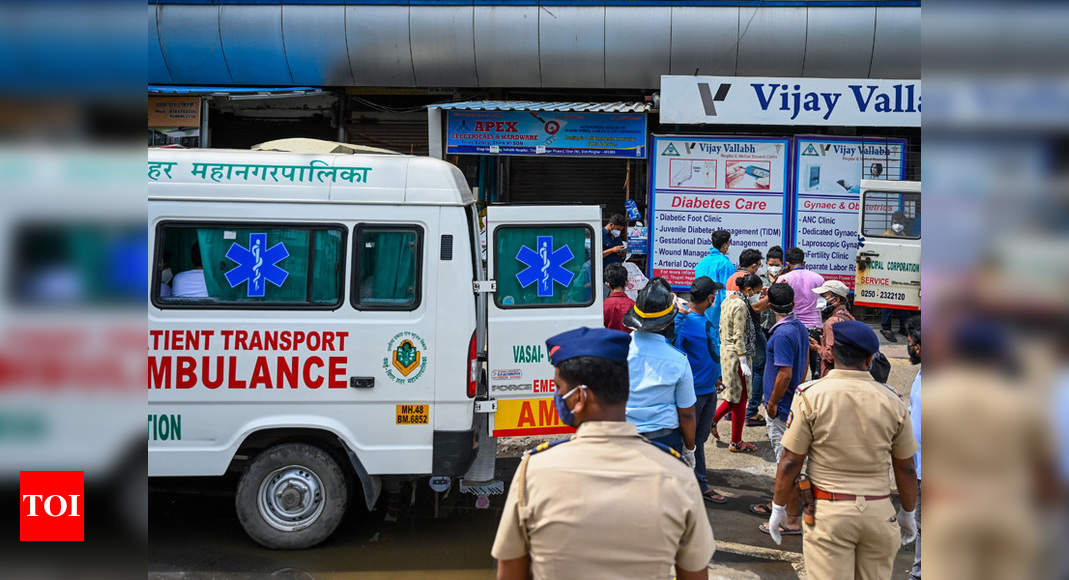India's COVID-19 Crisis: A Deeper Look
India's battle with COVID-19 has been a complex and multifaceted crisis, revealing both the country's resilience and its vulnerabilities. While the initial wave garnered global attention, the subsequent surges and the long-term impact continue to demand careful analysis. This article delves deeper into the various aspects of this ongoing challenge.
The Devastating Waves: A Timeline of Impact
India's COVID-19 experience wasn't a single event; it unfolded in devastating waves, each leaving a unique mark.
-
The First Wave (2020): Initially, India implemented a strict nationwide lockdown, achieving a relatively low infection rate compared to other nations. However, this came at a significant economic cost and exposed vulnerabilities in healthcare infrastructure. The focus was primarily on containment and minimizing the spread.
-
The Second Wave (2021): This wave proved far more catastrophic, overwhelming healthcare systems and leading to widespread suffering and death. The highly contagious Delta variant played a significant role, and a shortage of oxygen, hospital beds, and essential medications created a humanitarian crisis. This period highlighted the critical need for robust healthcare infrastructure and equitable access to resources.
-
Subsequent Waves and Variants: While subsequent waves were less severe than the second, they underscored the ongoing threat posed by new variants and the importance of sustained public health measures. The emergence of Omicron and its subvariants further complicated the situation, demanding continuous adaptation in prevention and treatment strategies.
Beyond the Numbers: Understanding the Human Cost
The official COVID-19 death toll in India remains a subject of debate, with some independent analyses suggesting significantly higher numbers. Beyond the statistics, the crisis caused immeasurable human suffering:
-
Loss of Life: The sheer number of deaths had a devastating impact on families and communities, leaving behind a legacy of grief and economic hardship.
-
Long COVID: The long-term effects of COVID-19, often referred to as "Long COVID," are becoming increasingly recognized. Many individuals continue to experience debilitating symptoms long after their initial infection, impacting their health and productivity.
-
Economic Fallout: The pandemic dealt a significant blow to India's economy, impacting livelihoods across various sectors and widening existing inequalities. Lockdowns, disruptions to supply chains, and reduced consumer spending contributed to widespread job losses and poverty.
India's Response: A Mixed Bag of Successes and Challenges
India's response to the pandemic has been a complex interplay of successes and failures:
-
Vaccine Production: India's impressive vaccine production capacity played a crucial role in its vaccination drive, providing doses not only domestically but also globally through the COVAX initiative.
-
Healthcare Infrastructure Gaps: The crisis exposed significant gaps in India's healthcare infrastructure, especially in rural areas and underserved communities. The lack of adequate hospital beds, oxygen supplies, and trained medical personnel exacerbated the severity of the crisis.
-
Public Health Measures: The effectiveness of public health measures, including mask mandates and social distancing guidelines, varied across regions and time periods. Public awareness campaigns played a vital role, but inconsistent enforcement hampered their impact.
The Path Forward: Lessons Learned and Future Preparedness
The COVID-19 crisis in India offers crucial lessons for pandemic preparedness and response:
-
Strengthening Healthcare Infrastructure: Investing in robust healthcare infrastructure, including increasing hospital bed capacity, improving access to essential medical supplies, and training more healthcare professionals, is critical.
-
Equitable Access to Healthcare: Addressing healthcare disparities and ensuring equitable access to quality care for all citizens, regardless of socioeconomic status or geographic location, is essential.
-
Enhanced Surveillance and Data Collection: Improving surveillance systems and data collection mechanisms to monitor emerging variants and track the spread of the virus is crucial for early detection and response.
-
Investing in Public Health Education: Continuous public health education campaigns can improve public awareness and promote the adoption of preventive measures.
Conclusion:
India's COVID-19 crisis serves as a stark reminder of the devastating impact of pandemics and the importance of proactive pandemic preparedness. While the immediate crisis may have subsided, the long-term consequences remain significant, necessitating continued investment in healthcare infrastructure, public health initiatives, and equitable access to resources. By learning from past experiences, India can better prepare for future health challenges. Further research into Long COVID and its long-term impact is also crucial for comprehensive post-pandemic recovery.
